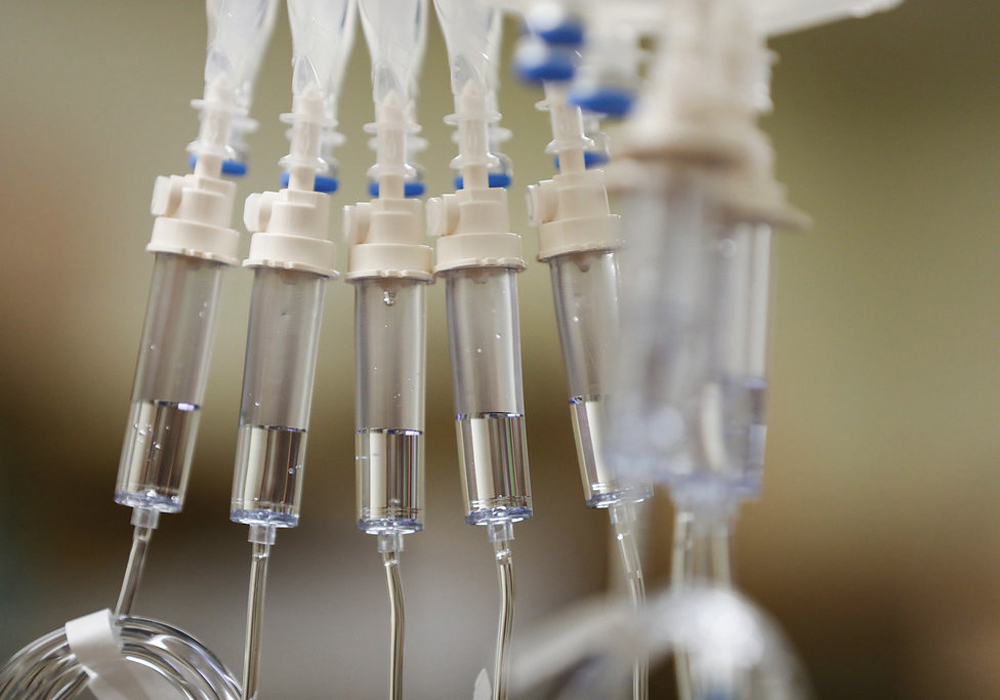Manufacturers are reporting a new shortage of sodium chloride 0.9% injection minibags. The 2017 shortage is attributed to damage in Puerto Rico from Hurricane Maria, where Baxter Healthcare and other companies manufacture the bulk of their U.S. supply of minibags. Nursing and pharmacy should collaborate to review stock availability and may need to purchase products from outside the United States.
Oncology nurses can refer to the ONS Chemotherapy and Biotherapy Guidelines and ONS Safe Handling of Hazardous Drugs to review their policies and procedures related to IV push medications and other options for medication delivery. Staff education may be needed regarding IV push medications and new or different equipment. Provide resources and manufacturer information to those administering drugs via a different route.
Alter your practices to minimize the use of minibags. Consider the following measures when possible:
- Provide medications by IV push instead of short-term infusion.
- Change medications to oral delivery (e.g., potassium supplements, premeds).
- Use syringe pumps and other equipment (update knowledge on pump operations)
- Mix in D5W rather than NS when possible
- Avoid prepping primary lines ahead, to minimize waste.
Consider the following steps to minimize exposure to hazardous drugs (refer to your institution’s hazardous drug list or the National Institute for Occupational Safety and Health’s list of hazardous drugs):
- Use the back priming method from a primary IV line to prime secondary tubing.
- Do not fill syringes more than 3/4 full.
- Avoid using glass bottles because of the need to vent during infusion and the potential for breakage.
- Do not inject hazardous drugs into buretrol systems for infusion.
- Do not infuse a vesicant through a syringe pump.
- With any IV setup, and especially if using a new or different delivery system, tighten connections to avoid leaks.
The following content was originally published July 2014.
Saline shortages that began late last year are now expected to continue throughout the remainder of 2014. The products affected include 1-liter bags of normal saline or 0.9% sodium chloride IV hydration solution, lactated ringer’s solution, and dextrose 5% in water. According to manufacturers, the causes are multipronged.
- Demand for saline rose 20% from January–March 2014, partly because of an increased need for saline during the 2014 flu season.
- Although all three companies that manufacture saline are producing it at capacity, they’re just not able to keep up with demand.
- Additionally, the companies are under increased U.S. Food and Drug Administration (FDA) scrutiny to ensure sterility, after the FDA discovered leaks in one company’s bags and particle contaminates in another’s.
To compensate for the shortage, some hospitals are instituting guidelines for conserving the use of saline solutions for patients who absolutely need them. Other strategies include using smaller saline bags when possible and transitioning patients who still need hydration to drink water from cups a little sooner than they did in the past. Although not always considered a “drug,” the saline shortage has similar consequences to other drug shortages: Hospitals spend $216 million a year on the labor costs of managing drug shortages.
For alternative agents and management of patients needing saline, see Figure 1. The FDA also has a saline shortage update page that will share the latest information.
| Figure 1. Alternatives to Managing Patients Needing Saline |
|---|
|
Use oral hydration when possible. |
|
Substitute products based on availability. For example, lactated ringer’s solution may be substituted for 0.9% sodium chloride solution, or 5% dextrose with 0.45% sodium chloride may be substituted for 5% dextrose. The American Society of Health-System Pharmacists (ASHP) has a comparison of fluid components. |
|
Evaluate the clinical need for IV fluid replacement and “keep vein open” orders at every shift change. Consider catheter locks and flushes for eligible patients. Discontinue infusions when appropriate. |
| Use smaller bag sizes for low rate infusions when possible. ASHP has suggested bag sizes for various infusion rates. |
| Reserve some products for specific situations where certain salines are needed. |






